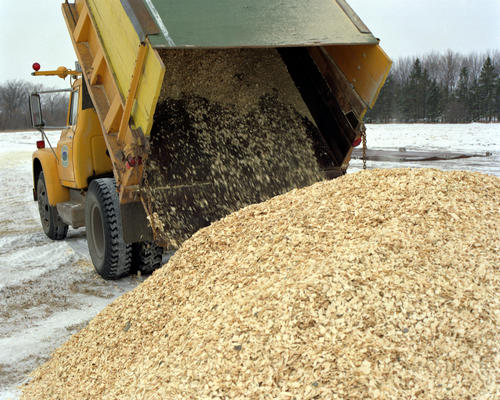Wood was one of the first sources of energy
People have used wood for cooking, heating, and lighting for thousands of years. Wood was the main source of energy for the United States and the rest of the world until the mid-1800s. Wood continues to be an important fuel in many countries, especially for cooking and heating in developing countries.
In 2022, about 2.1% of U.S. annual total energy consumption was from wood and wood waste—bark, sawdust, wood chips, wood scrap, and paper mill residues.1
Industry consumes the most wood and wood waste for energy in the United States
Industry accounts for most wood and wood-waste fuel consumption in the United States. The top industrial users are wood product and paper manufacturers. They use lumber mill and paper mill waste to produce steam and electricity, which saves money because it reduces the amount of other fuels and electricity they must purchase to operate their facilities. In 2022, the industrial sector accounted for about 61% of total U.S. consumption of wood and wood waste. Wood and wood waste also accounted for about 8.5% of industrial sector end-use energy consumption and 6.9% of total industrial sector energy consumption.2
The residential sector is the second-highest consumer of wood for energy in the United States. Wood is used in homes throughout the United States for heating as cord wood in fireplaces and wood-burning appliances, and as pellets in pellet stoves. In 2022, wood energy accounted for about 4.0% of residential sector end-use energy consumption and 2.5% of total residential energy consumption. In 2020, 8.9% of all U.S households (about 11 million) used wood for energy (mostly for space heating). About 2.2 million households used wood as the main space-heating fuel.3
In the electric power sector, several power plants burn mostly wood to generate electricity, and some coal-burning power plants burn wood chips with coal to reduce sulfur dioxide emissions. Most of the commercial sector's wood use for energy is for heating.
- Wood and wood waste energy consumption by energy-consuming sectors—in trillion British thermal units (TBtu)—and their percentage shares of total U.S. wood and wood waste energy consumption in 2022 were:
- Industrial1,278 TBtu61%
- Residential539 TBtu26%
- Electric power200 TBtu10%
- Commercial83 TBtu4%
2 End-use energy consumption includes primary energy consumption plus retail electricity sales to the industrial sector. Total energy consumption includes end-use consumption plus electrical system energy losses
3 Residential Energy Consumption Survey 2020, Housing Characteristics, Table HC1.1
Last updated: June 12, 2023, with data from the Monthly Energy Review, April 2023; data for 2022 are preliminary.

